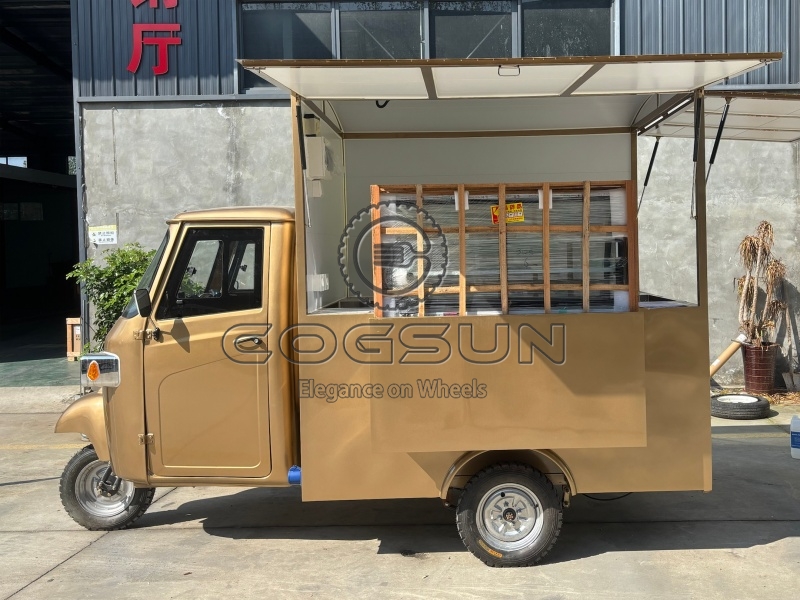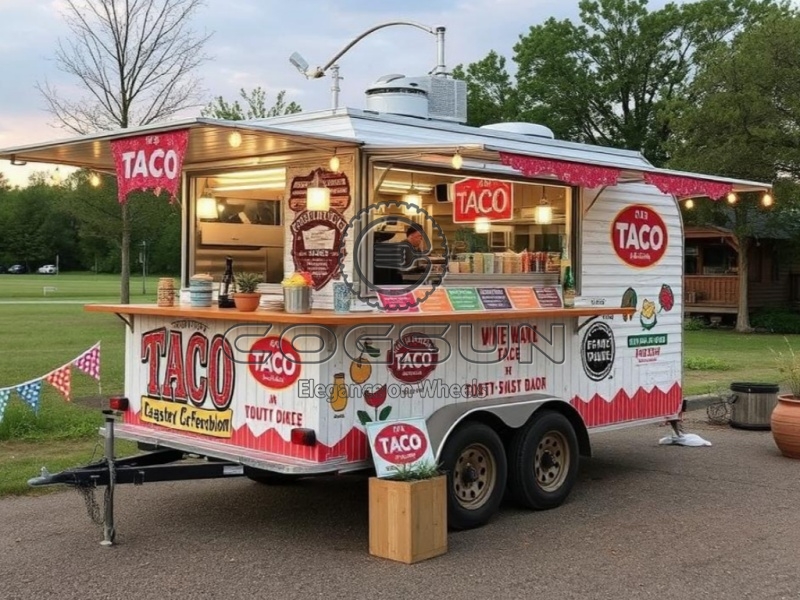Across the streets of north american cities, the colorful Mexican taco trucks have long been a fixture of the urban landscape. They are not only “mobile temples” for food lovers, but also embody the soul of Mexican culinary culture. From spicy and juicy tacos to crispy tortilla chips, these trucks redefine the boundaries of street dining with their whimsical flair and creativity. This article will delve into the unique charm of Mexican taco trucks, their internal equipment, and their diverse applications.

Features
1.Mobility and Flexibility
- The greatest advantage of taco trucks is their “stop and eat” convenience. Whether in a busy commercial district, a late-night bar scene, or a community event, they can quickly arrive, providing instant gratification. This flexibility also allows operators to adjust their location based on foot traffic and reduce rental costs.
2.A fusion of authentic flavors and creativity
- Authentic Mexican taco trucks adhere to traditional ingredients: tortillas, slow-cooked beef (barbacoa), smoked chipotle (chipotu), and fresh salsa. However, many trucks are also innovative, offering fusion dishes like Korean kimchi tacos, Thai lemongrass chicken wraps, and even vegetarian options, appealing to a younger demographic.
3.Value for money and socializing
- A taco typically costs between $3 and $8, significantly less than restaurant prices, yet offers a rich and varied flavor palette. Long lines often form in front of these trucks, where diners chat while waiting, fostering a unique social atmosphere and even spawning offline events like the “Taco Truck Culture Festival.”
Interior Equipment
1.Gas stoves and pans
- Used for frying tortillas, sautéing meats (such as carne asada), and heating beans, often featuring built-in designs to save space.
2.Steam warming cabinets
- Keep tortillas soft and moist while preventing ingredients from cooling, ensuring every taco is perfectly cooked.
3.Refrigerator and freezer
- Store perishable ingredients like fresh meats, cheese, and guacamole in separate compartments. Some trucks are equipped with solar power systems for outdoor use.
4.Multifunctional Cutting Station
- An integrated sink, cutting board, and spice rack allow chefs to quickly chop onions, cilantro, and limes, improving serving efficiency.
5.Exhaust System and Range Hood
- Ensures air circulation in confined spaces to prevent fume accumulation. Some high-end trucks also feature air purification.
6.Digital Ordering Screens and Payment Terminals
- Modern taco trucks are increasingly incorporating touchscreen ordering kiosks and mobile payment devices to reduce queues and support social media sharing for promotional offers.
Application Areas
1.Urban Street Economy
- A staple of traditional night markets and food courts, taco trucks offer quick meals to office workers, students, and tourists, becoming a vital part of urban nightlife.
2.Private Events and Parties
- Customized taco truck services are popular for weddings, birthdays, company team-building events, and other occasions. Guests can choose their own toppings, enjoying a “private chef” experience.
3.Music Festivals and Sporting Events
- Taco trucks, with their fast delivery and diverse selection, have become the go-to catering provider for large-scale events. Some even collaborate with organizers to create limited-edition tacos.
4.Brand Marketing and Cross-Industry Collaborations
- Food brands often collaborate with taco trucks, launching themed food trucks for promotional tours. Tech companies leverage their mobility to attract crowds by offering free tacos at product launches.
5.Social Welfare and Community Support
- Some nonprofits use taco trucks to provide hot meals to the homeless or promote healthy taco options near schools, promoting food culture while also fulfilling their social responsibility.




